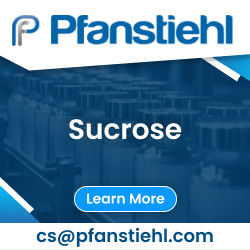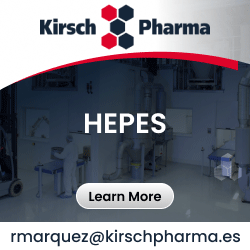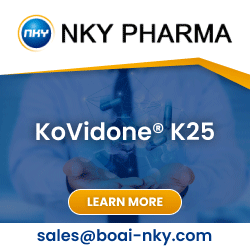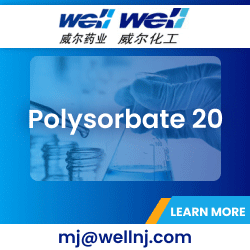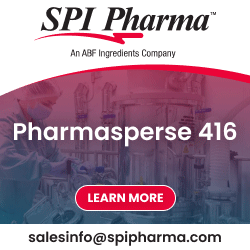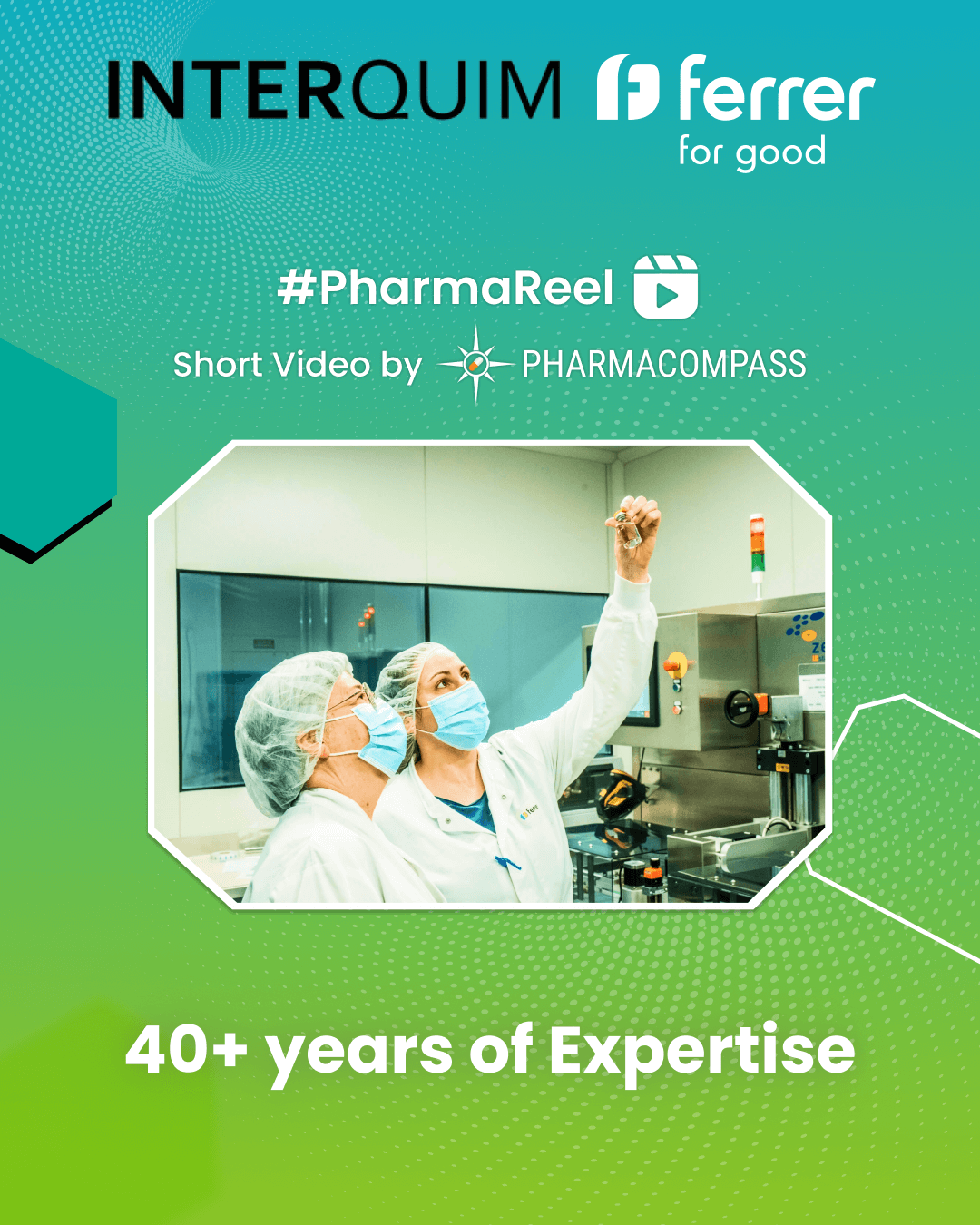Overview of semi-solid, dry filled & liquid-filled hard capsule (LFHC) formulations & technology offered by producers of empty hard gelatin capsules.
Q1. What are hard gelatin capsules or HardGels?
Hard gelatin capsules are a modern, solid dosage form for medicinal use, stemming from the increased emphasis on pharmacokinetics found in drug development today. This has considerably expanded the range of possible formulations utilising hard gelatin capsules as a simple dosage form for oral drug delivery.
Hard gelatin capsules or two-piece capsules, are oral dosage forms in which one or more medicinal agents and/or inert materials are enclosed within a hard gelatin capsule shell. Hard gelatin capsules, unlike softgels, are made of two distinctly colored parts, a body and a cap. The body is first filled with a mix of active ingredients and excipients and subsequently closed with a cap, using either a manual or an automatic press machine.
Differences between soft and hard gelatin capsules:
- While soft and hard gelatin capsules have some similarities, they are two distinct solid dosage forms. Soft gelatin capsules come in round, oval, tubular, etc. one-piece formulations, whereas hard gels are only available in cylindrical, two-piece capsules.
- Soft and hard gelatin capsules, both use plasticizers, coloring agents, sugar, etc. as excipients, but the types and/or amounts that are used vary from one dosage form to another. For example, the ratio of plasticizer to gelatin is higher in softgels as compared to hard gels.
Hard gelatin capsule shells are composed largely of gelatin. Other than gelatin, it may contain materials such as plasticizers, colourants, water, opacifying agents, and preservatives which either enable capsule formation or improve their performance by facilitating bioavailability enhancement.
During the formulation and manufacturing of solid dosage forms such as capsules, medicinal concoctions are filled into the body of the empty capsules before the cap is pushed into place. The manufacturing processes, properties, and benefits of hard gelatin capsules are noted below.
Formulation & Manufacturing of Empty Hard Gelatin Capsules :
Step 1: Preparation of gelatin solution or dipping solution for the two-piece capsule machines.
Step 2: Dip coating solution onto metal pins to simultaneously form the caps & the bodies.
Step 3: Rotation of dip coated pins to distribute gelatin over the pins uniformly.
Step 4: Drying the gelatin coated pins to remove water and solidify the hard gelatin capsule shells.
Step 5: Stripping & trimming.
Step 6: Joining the trimmed capsule shells, after which the capsules are ejected from the two-piece capsule machine.
Step 7: Polishing & printing.
Filled Hard Gelatin Capsules:
Step 8: Developing & preparing the inner fill formulation.
Step 9: Filing hard capsule shells via manual, semi automatic or automatic filling devices.
Step 10: Sealing the dry filled capsules.
Step 11: Cleaning & polishing the dry filled capsules.
- Hermetically sealed and airtight
- Insoluble in cold water
- Easily digested and dissolved within minutes
- Safe to consume
- Longer shelf life
- Fast Action
- Water content of 13–16%
- Taste & odor masking
- Ease of administration
- Portability
- Rapid drug action
- Flexibility of formulation
- Barrier to oxidation
- Solubility enhancement of poorly soluble drug substances
Q2. Who are the leading hard gelatin capsule suppliers in the industry?
The leading pharmaceutical empty capsule manufacturers offering hard gelatin capsule shell manufacturing are:
Capsugel
Capsugel is an empty capsules manufacturer that has more than 20 years of experience with hardgel & softgel technologies. Capsugel offers a range of empty capsules, including empty hard gelatin capsules and HPMC capsules.
They offer Coni-Snap® capsules, the world's most popular two-piece hard gelatin capsules and the product of choice for consumer health and nutrition companies due to their reliable, outstanding performance. They also offer LICAPS®, LFHC dosage forms,which utilizes a series of cutting-edge advancements in capsule filling, sealing and final product inspection to deliver the high protection and fast release patients and consumers expect.
ACG Worldwide
ACG is the largest empty capsules manufacturer offering end-to-end manufacturing solutions for the pharmaceutical industry. Their process solutions include filling machines for capsules containing everything from powders to liquids. Additionally, customers get all the support they need to select the right capsule-type filling method for products such as pharmaceutical empty capsules,including empty hard gelatin capsules and empty HPMC capsules.
Qualicaps
Qualicaps®, is a trusted delivery vehicle for products that promote healthcare. Qualicaps’ technology and product portfolio to complement the needs of solid oral dosage production include empty capsules and softgel machines. Moreover, the empty capsule manufacturers product portfolio includes Quali-G™, a trusted hard two piece gelatin capsule for oral pharmaceutical applications.
Suheung Capsule
Suheung Capsule has over 30 years of experience in contract manufacturing services for pharmaceutical empty capsules, softgel capsules, HPMC capsules, hard gelatin capsule shell manufacturing, etc. They offer highly stable hard gelatin drug capsules for the pharmaceutical industry. EMBO CAPS® capsules are manufactured to optimise stability and do not need to be refrigerated in transport.
Natural Capsules
Natural Capsules Limited manufactures various types of empty capsules such as empty hard gelatin capsules, HPMC Capsules, etc. The main objective of the company is to manufacture and market, printed and unprinted, hard cellulose and hard gelatin capsule shells.
Q3. What are liquid filled hard capsules (LFHC)?
Capsule filling, also known as encapsulation, is a process of enclosing active pharmaceutical ingredients (API) inside empty capsules, allowing them to be taken orally. Hard gelatin capsules are usually filled with powders, granules, or tiny pellets. However, certain hard gelatin advanced dosage forms are also encapsulated with liquid fill and semi-solid fill technology. Hard capsule shells with liquid fillers, produced via liquid fill hard capsule technologies, are referred to as Liquid Filled Hard Capsules (LFHC) or liquid filled hard gelatin capsules .
Liquid-fill hard capsule (LFHC) technology was established in the early 1980s as an alternative to soft gelatin capsules and offered a number of advantages over them. Furthermore, liquid-filled hard capsule (LFHC) technology became popular due to its simplicity of formulation and manufacturing, and its versatility in providing sophisticated solutions for a vast range of formulation and delivery needs.
Liquid filled hard capsules (LFHC) formulations are good alternatives to conventional dry filled capsules which are considered unsuitable or impractical. Therefore, drug categories that may benefit by shifting from dry filled capsules to liquid filled capsules include:
- Liquid filled capsules for the bioavailability enhancement of poorly water soluble drugs.
- Liquid filled hard gelatin capsules to accommodate materials with low melting points.
- Liquid filled hard capsules (LFHC) for low dosage drugs.
- Liquid-fill capsules for Highly Potent API (HPAPI) formulations.
- It is currently estimated that over 25% of all drug products in development have highly toxic or highly potent active pharmaceutical ingredients (API) and require some form of speciality capsules, such as advanced dosage forms, for drug delivery.
- Liquid-fill capsules for Highly Potent API (HPAPI) formulations allows the incorporation of API powder into a liquid formulation as either a solution or suspension. Liquid-fill capsules for highly potent APIs further remove the risk of subsequent airborne contamination and improve the homogeneity of low-dose products.
- Liquid filled hard gelatin capsule (LFHC) shells for increasing the critical stability of moisture sensitive formulations.
- And, Liquid filled hard capsule (LFHC) formulations for the formulation and manufacturing of sustained release drug delivery systems (DDS).
As seen above, liquid-filled hard capsule (LFHC) technology is further preferred due to its simple manufacturing process. This manufacturing process is outlined below.
Step 1: Preparation of outer hard gelatin capsule shells and inner liquid fills.
Step 2: Rectification of empty capsules for proper orientation.
Step 3: Separation of the body and cap.
Step 4: Liquid filling (encapsulation) of hard shell capsules using precision pumps.
Step 5: Fusing the cap and body of the liquid filled hard capsule (LFHC) formulations via seals or bands.
Step 6: Ejecting the liquid filled hard capsules.
- Dosage form uniformity
- Safe handling of highly potent APIs
- Bioavailability enhancement
- Increased API stability
- Clinical development tools
- Dosage form flexibility
Q4. What are the considerations for selecting excipients for liquid-filled hard capsules?
Liquid-filled hard capsule technology (liquid fill and semi-solid fill technology) offers several advantages over other solid dosage forms. Liquid-filled capsules are often used to deliver APIs such as oily or waxy substances that are not easily formulated in solid delivery systems. Substances that are easily formulated in solid dosage forms may also be formulated in liquid-filled capsules for product line extensions and to improve product performance or bioavailability.
This unique and flexible advanced dosage form has a proven track record for addressing complex formulation challenges and improving or repositioning existing formulations. Liquid-filled hard capsules (LFHC) provide secure protection to drug compounds in terms of leak-proof, airtight encapsulation that is impermeable to moisture, oxygen and light.
To obtain these benefits, selecting excipients for liquid-filled hard capsules that are well matched and suitable to the following liquid filled hard capsule shell considerations, is crucial:
1. Size of capsules: As empty hard gelatin capsules come in a limited range of sizes, excipients that are of suitable quantities (that can be filled in the given volume of the hard capsule shell) are chosen.
2. Viscosity: The viscosity of fill materials has an optimum range and therefore excipients used in the filling of capsules are selected to optimize the viscosity of the liquid filled hard capsule (LFHC) formulations.
3. Liquid or low melting point APIs: Adding an excipient, with a high melting point to a liquid or low melting point APIs, forms a flowable mass for the filling of capsules.
4. Cross-contamination: Another consideration is the potential for crosslinking and consequently, cross contamination. Aldehydes produced during the storage of liquid filled capsules may contaminate the gelatin of the hard capsule shells. If this interaction is the problem, it can be overcome by the use of HPMC capsules that do not undergo these cross-linking reactions.
- HPMC Capsules: Hydroxypropylmethylcellulose (HPMC) has become a successful alternative material for two-piece, speciality capsules and is used for supplements all over the world.
- Owing to their low-moisture content, HPMC capsules offer a significant advantage over other dosage forms. Future refinements in the production and filling of HPMC capsule shells and improvement in their in vivo/in vitro dissolution would ensure their superiority over hard gelatin capsules.
5. Processing hygroscopic APIs: The low stability associated with hygroscopic APIs can be resolved via incorporating APIs into molten excipients such as PEG, poloxamer, or wax at temperatures up to 70° C.
6. Poorly soluble APIs: Poor solubility and decreased bioavailability of APIs is a problem that has been plaguing drug formulators for eons. Adding certain solubilizers and emulsifiers to API mixtures can result in bioavailability enhancement.
7. Enteric, sustained & targeted-release profiles: Such variations can be achieved by using suitable coating agents once the formulation is developed.
8. Product differentiation, branding, counterfeit prevention: Varied colorants, flavoring agents, and other excipients can be used to differentiate one product from another and create brand awareness amongst consumers.
Q5. What are the different components (ingredients) of hard gelatin capsules?
Some components used in hard gelatin capsule shell manufacturing & filling include, but are not limited to:
1. Gelatin (E.g. Type A & Type B)
Gelatin is an animal protein made by boiling the collagenous material from animal bones, hides, and skin. Depending on its source, gelatin can be divided into two types; Type A, from acidic hydrolysis of animal skin, and Type B, from basic hydrolysis of bovine bones.
Gelatin is one of the most crucial hard gelatin capsule ingredients and can only be used once it has been approved by regulatory authorities. Furthermore, approval is only granted when it satisfies minimum specifications relating to gel strength, viscosity, particle size distribution, etc.
2. Colorants (E.g. Dye, Lakes, Mineral Colors, etc.)
Coloring agents can impart various colors to hard gelatin capsules. Colorants play an important role in improving patient compliance and can be further selected to complement the disease being treated.
3. Opacifiers (E.g. Tio2)
They provide protection against light and photodegradation. They also play a role in concealing the contents used in filling hard capsule shells.
4. Plasticizer (E.g. Sorbitol, glycerin, etc.)
Plasticizers are added to gelatin to reduce the rigidity of the polymer and make it more pliable. The ratio of plasticizer and gelatin is lower in hard gelatin capsules, approximately 0.4 : 1.
5. Preservatives (E.g. Propyl & Methyl Parabens)
These agents play a role in preserving the fillings of hard capsules, which increases the speciality capsules’ shelf life and make hard gelatin capsules safe for consumption.
6. Diluents (Lactose, mannitol, etc.)
Diluents improve plug formation and compression of powder inner fill materials.
7. Lubricants (E.g. Magnesium stearate, Glyceryl monostearate, etc.)
Improve flow properties of powders and reduce powder adhesion to metal parts.
8. Glidants (E.g. Aerosil & Talcum)
Improve powder flow properties of the mixtures used in the filling of capsules.
9. Water
12 - 16 % (Varies depending on storage conditions).
10. Disintegrants
Ensure the disintegration of the powder mixtures used in filling hard capsule shells.
11: Other Additives
It is important to distinguish producers of empty hard shell capsules, from those involved in filling hard capsules. While producers of empty hard shell capsules are involved in the manufacturing of hard gelatin capsule shells, suppliers offering encapsulation or filling of hard capsule shells are specialized in inner-fill materials and filling procedures. Producers of empty hard capsule shells that also offer encapsulation can function as end-to-end organizations and fulfill all of one's hard gelatin capsule shell manufacturing requirements under one roof.
All Suppliers






